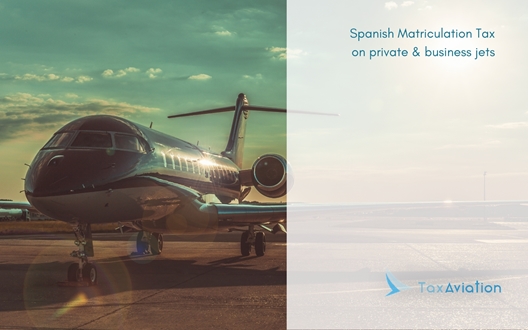After Spain joined the European Union in 1985, VAT became applicable on the supply of means of transport at a luxury rate of 33% tax. This luxury rate was reduced to 28% in 1992. The same year 1992 after the VAT harmonization that capped the standard Spanish VAT rate was to 15%, Spanish authorities in order not to lose revenue implemented a new tax, the IEDMT. The new tax provisions were included in the Spanish Excise Duty Law 38/1992, of 28 December, of Special Taxes. The combination of the new IEDMT tax rate of 13% and the standard VAT rate gave as a result the same tax revenue for the authorities, 28%. Later on the due to changes in VAT rates, IEDMT tax rate was reduced to 12%.
The IEDMT (also known as Matriculation Tax) legal provisions are laid down in the Excise Duties Law 38/1992. The situations where the tax can be applied on private aircrafts are established in article 65, paragraph 1, clauses c) and d) as below:
“c) The first registration of airplanes, light aircrafts and any other aircraft, new or used, provided with mechanical engine, in the (Spanish) Aircraft Register, except the following:
1- Aircraft that, due to their technical characteristics, can only be used for agricultural or forestry work or for the transfer of sick and injured people.
2- Aircraft whose maximum weight when taking off does not exceed 1,550 kilograms according to the certificate issued by the General Directorate of Civil Aviation.
“d) The circulation or use in Spain of the means of transport referred to in the above paragraphs shall be subject to the duty, in case their final registration in Spain has not been requested* pursuant to the first additional provision, within 30 days of starting to be used in Spain.”
The First Additional Provision of the Excise Duties Law stipulates that:
"1. The means of transport, new or used, referred to by this Law shall be subject to final registration in Spain when they are intended for use in Spanish territory by individuals or entities residing in Spain or holding establishments located in Spain.”
Therefore the either, the registration in the Spanish aircrafts registry or the use of the aforementioned aircrafts in Spain by persons or entities detailed above would trigger the enforcement of the tax.






